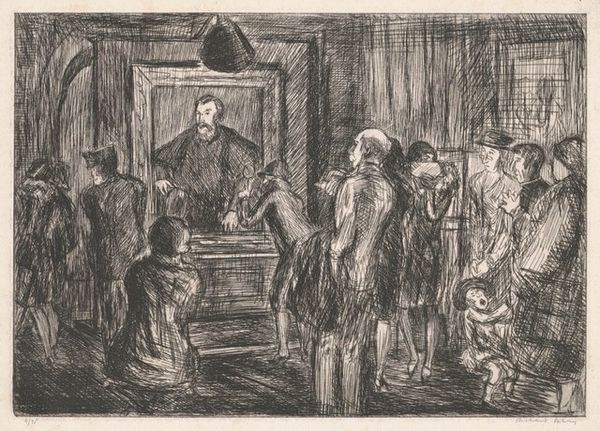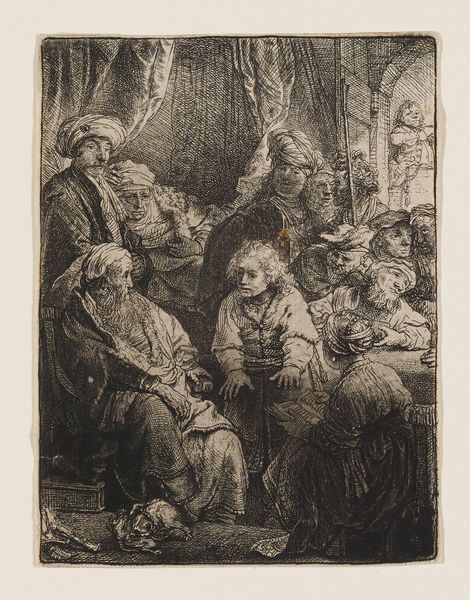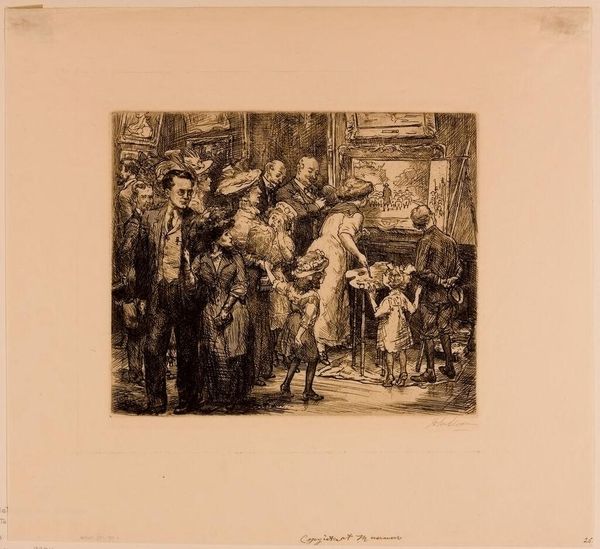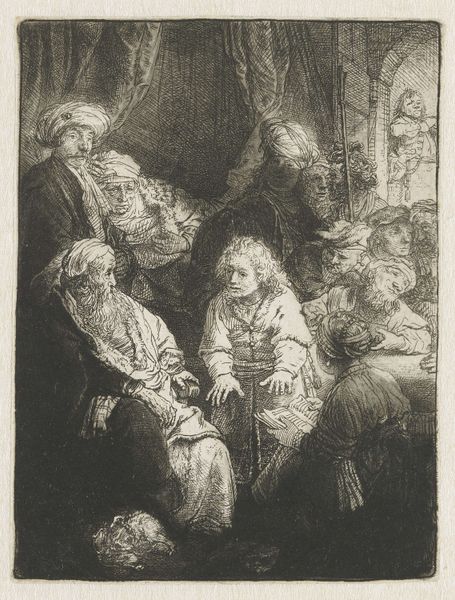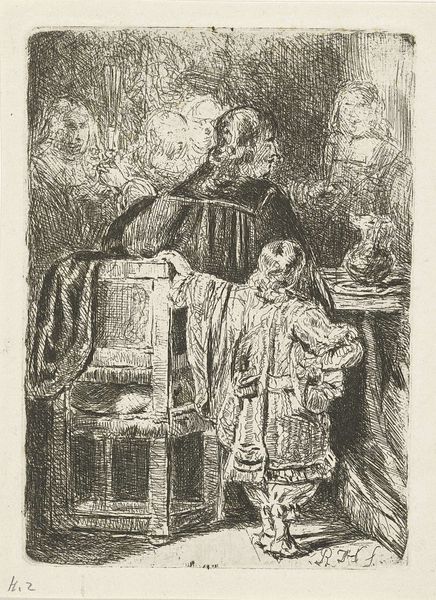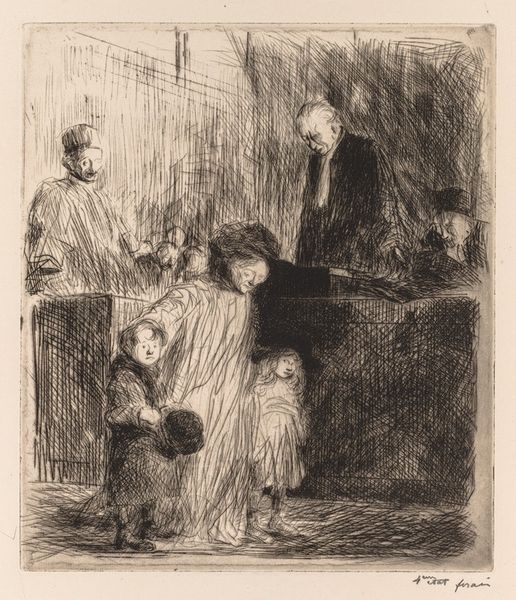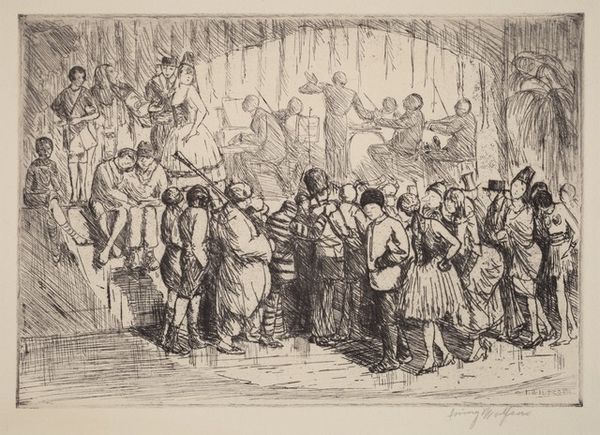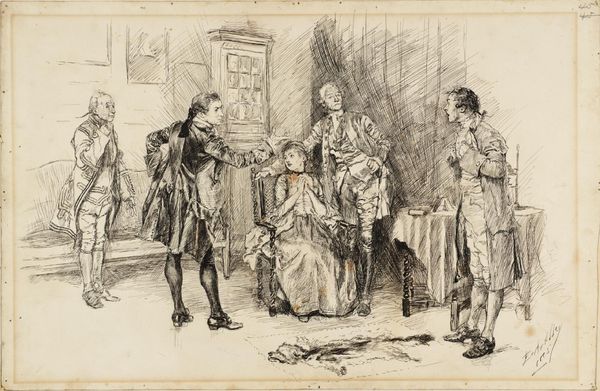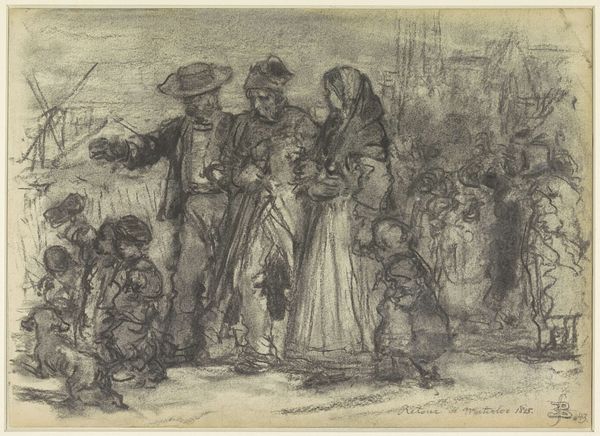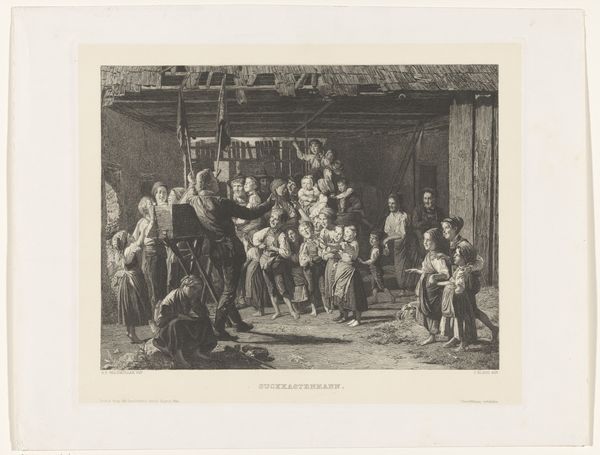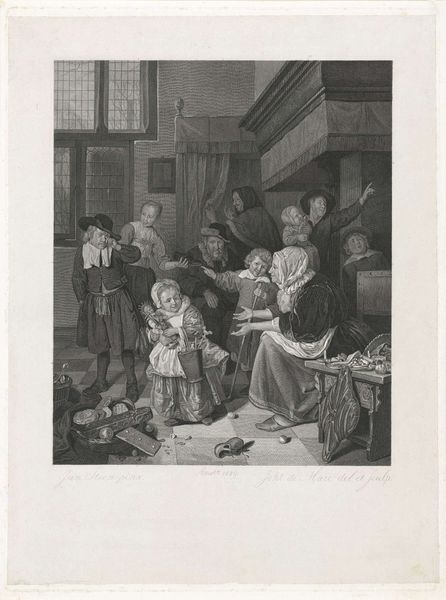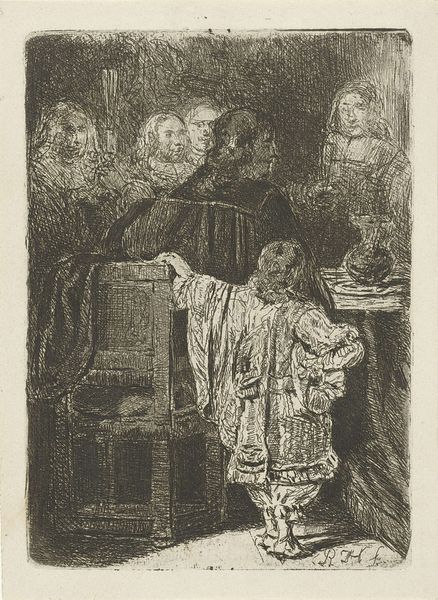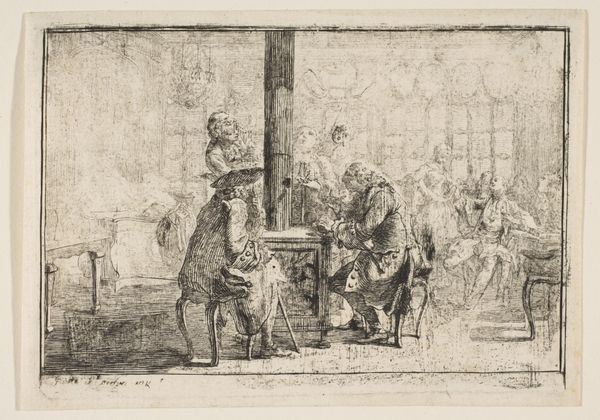
Dimensions: plate: 19.05 × 22.86 cm (7 1/2 × 9 in.)
Copyright: National Gallery of Art: CC0 1.0
Curator: Here we have John Sloan’s etching, "Copyist at the Metropolitan Museum," created in 1908. What are your immediate impressions? Editor: Crowded! And somehow… nostalgic. The scene pulsates with a layered symbolism: observation, imitation, art history… the very act of looking becomes a spectacle in itself. Curator: Absolutely. Sloan was part of the Ashcan School, documenting everyday life. Here, he captures a moment within the Met, but it speaks volumes about class, access, and gender. Who is allowed to create? Who gets to interpret? Notice how the women are front and center in the scene, looking at both the copyist and her copied piece? Editor: Yes, the hats! They function as visual markers of a particular social status, almost performative in their grandeur. It contrasts sharply with the more subdued dress of, say, the copyist and her male companion, focusing solely on creation. Is Sloan suggesting a distinction in how different demographics engage with art? Curator: Precisely. And consider the original artwork being copied – we see only glimpses of a landscape scene. We’re not given enough to interpret it properly; is this because the subject of this work is not what artwork is copied but who is copying? Editor: Perhaps he is inviting us to ask who is not present. It speaks volumes about what the museum chose to spotlight. There’s almost a mise-en-abyme effect—a painting within a painting within an etching, questioning authenticity and reception through historical filters. Curator: This etching reflects Sloan’s socialist leanings, his interest in depicting the working class interacting with art. He brings attention to the power structures inherent within cultural institutions and to questions about who is being given access. Editor: It becomes a tableau, documenting a bygone era's approach to art and leisure. It's both fascinating and unsettling, revealing art’s potential to both unite and stratify. Curator: Thinking about how access to art changes but does not change, what is the artist hoping to reflect, both then and now, about seeing?
Comments
No comments
Be the first to comment and join the conversation on the ultimate creative platform.
